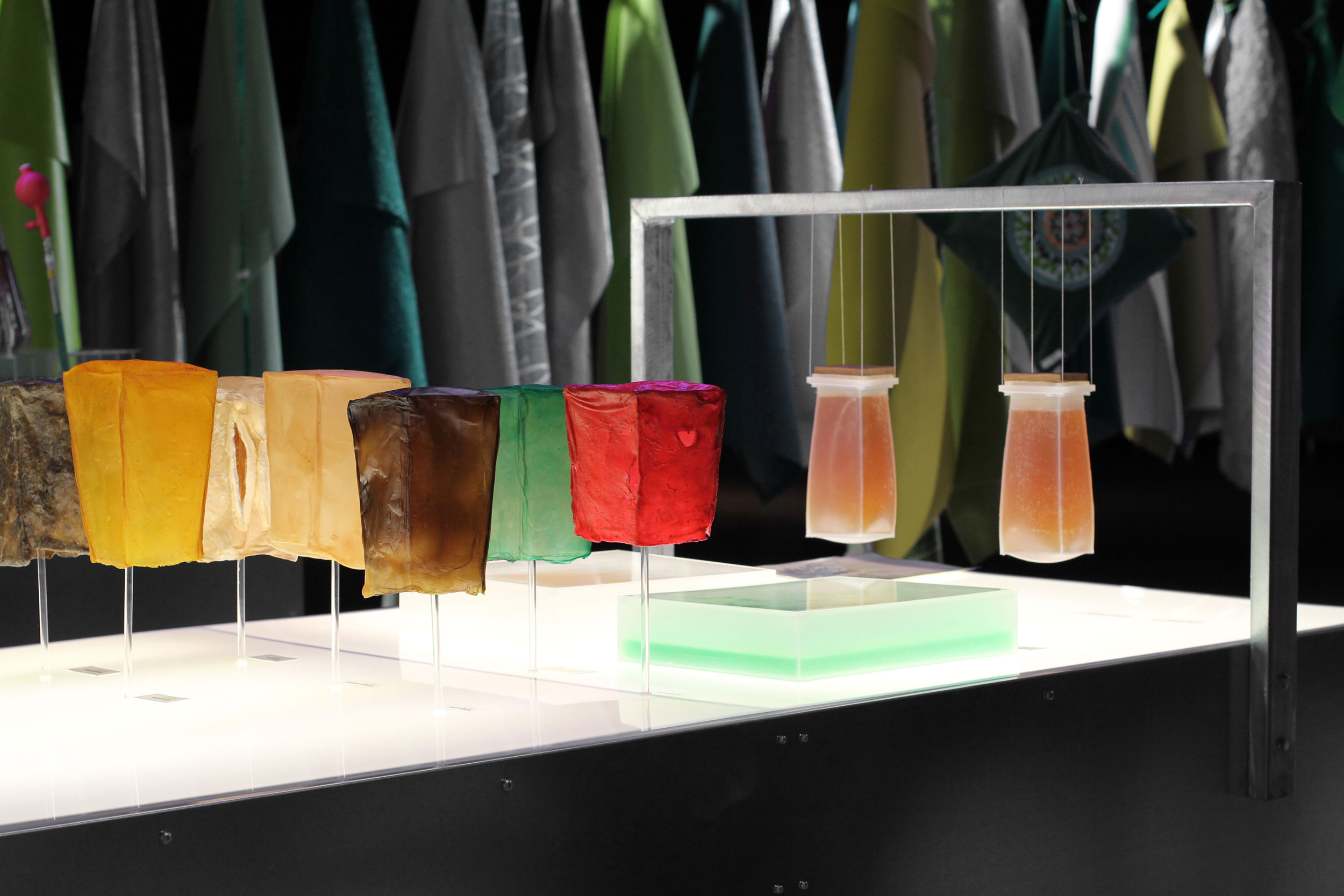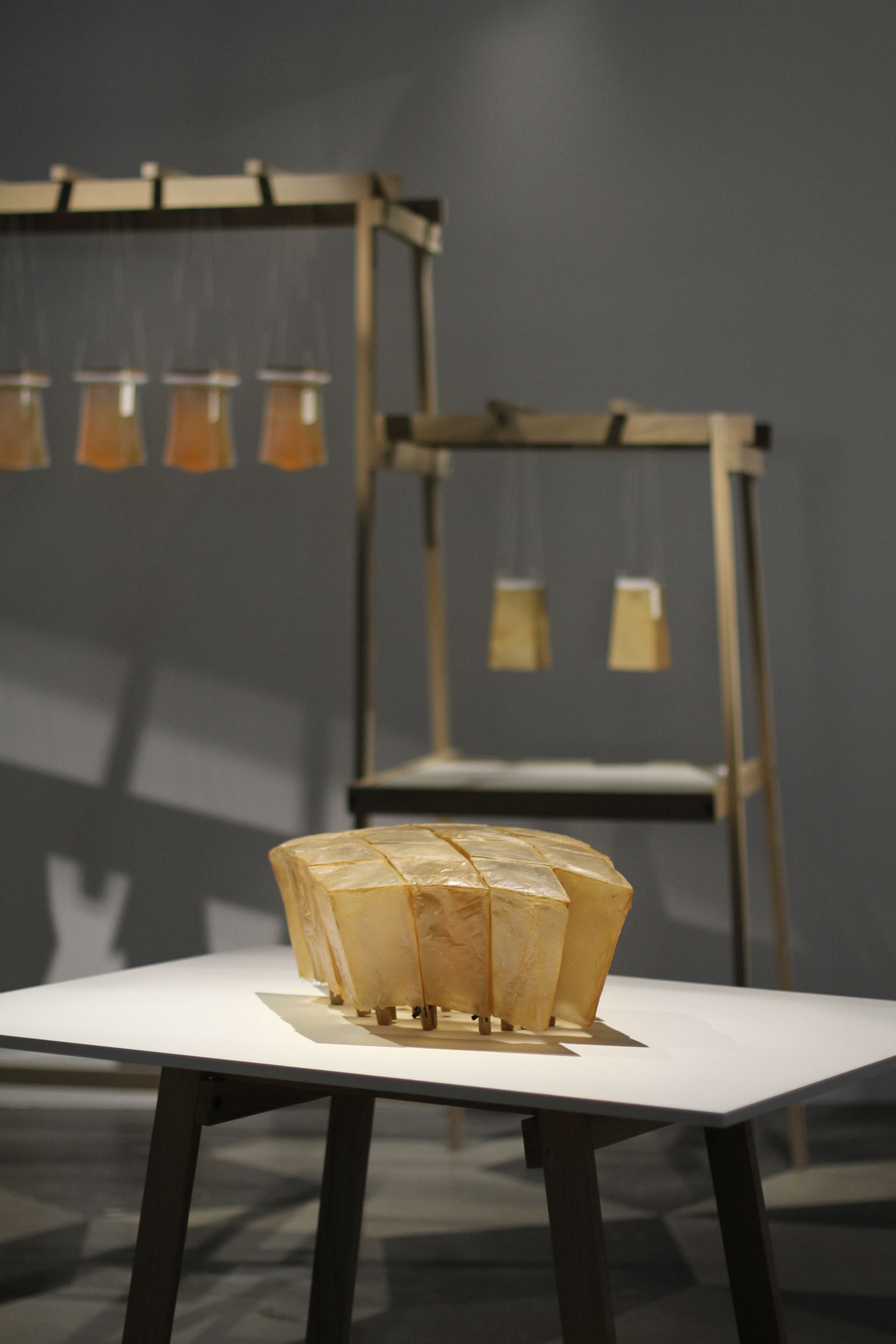Xylinum Cones
Xylinum Cones presents a production line that uses living organisms to grow geometric objects. The approach is part of a research project which uses bacteria cellulose to explore our perception of new biotechnological materials.
more...
Cellulose is the main constituent of plant cell walls and vegetable fibers. Bacterial cellulose has different properties from plant cellulose and is characterised by high purity, strength, mouldability and increased water-holding ability.
Within a growth period of three weeks each cellulose cone is ripening in a suspended mould. Hereafter it is dried and added to a sculptural assembly. The shape of the single cones as well as the way they are assembled is inspired by natural patterns of regularity, such as reptile scales or flower seeds. Similar but not the same, each single part is following a defined system.
In analogy we can find related adoptions being applied in architecture, such as roof tiles or clapboards.
The main motivation of Xylinum Cones is to prove the reproducibility of organically grown objects, but also to find a balanced level of geometric precision and organic diversity. There are standardisation systems or ‘norms’ for nuts and bolts, but does it make sense to apply such norms to potatoes or apples? How much freedom would grown artefacts need to thrive? In order to culturally implement new manufacturing routines into our daily lives, the aim of the project is to create a transparent production cycle along with visualising the moment of creation in a video and tangible objects that allow us to build a relationship with a new and culturally unloaded material.
Within a growth period of three weeks each cellulose cone is ripening in a suspended mould. Hereafter it is dried and added to a sculptural assembly. The shape of the single cones as well as the way they are assembled is inspired by natural patterns of regularity, such as reptile scales or flower seeds. Similar but not the same, each single part is following a defined system.
In analogy we can find related adoptions being applied in architecture, such as roof tiles or clapboards.
The main motivation of Xylinum Cones is to prove the reproducibility of organically grown objects, but also to find a balanced level of geometric precision and organic diversity. There are standardisation systems or ‘norms’ for nuts and bolts, but does it make sense to apply such norms to potatoes or apples? How much freedom would grown artefacts need to thrive? In order to culturally implement new manufacturing routines into our daily lives, the aim of the project is to create a transparent production cycle along with visualising the moment of creation in a video and tangible objects that allow us to build a relationship with a new and culturally unloaded material.
...less
Commissioners:
Science Gallery Dublin, Franklin Till
Places:
Schmalkalden, Berlin, Dublin, Frankfurt
Years:
2013-2014
Collaborator:
Jannis Hülsen
Tasks:
Material Research, Process development, Installation design and realisation
Topics:
Living Material, Biodesign, Biotechnology
Bacteria producing cellulose fibres, Video: Emilia Forstreuter






